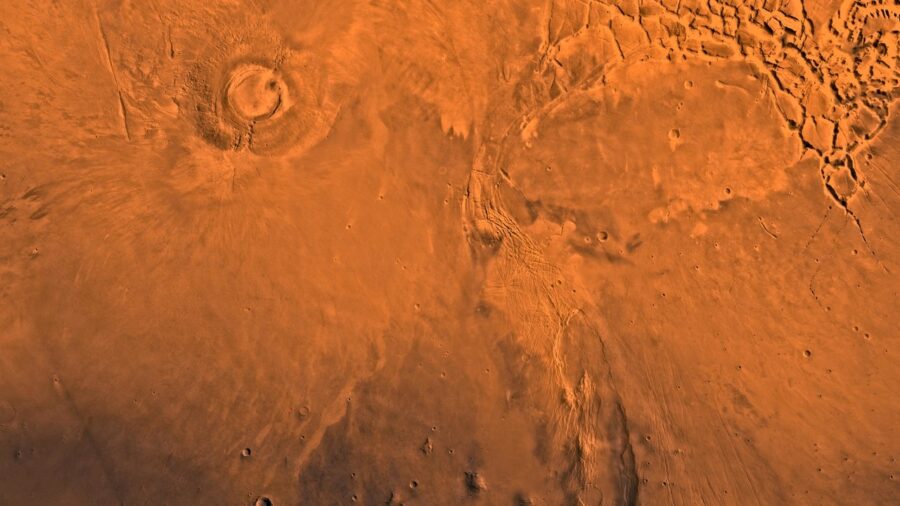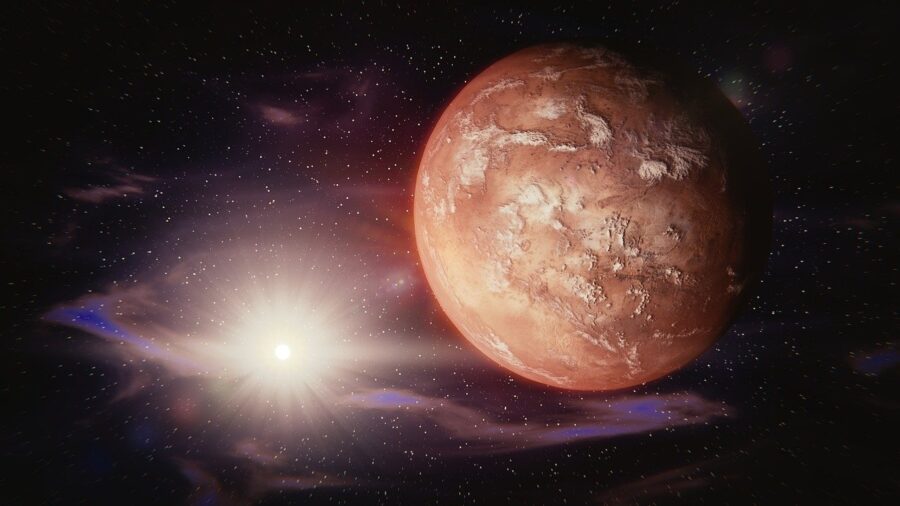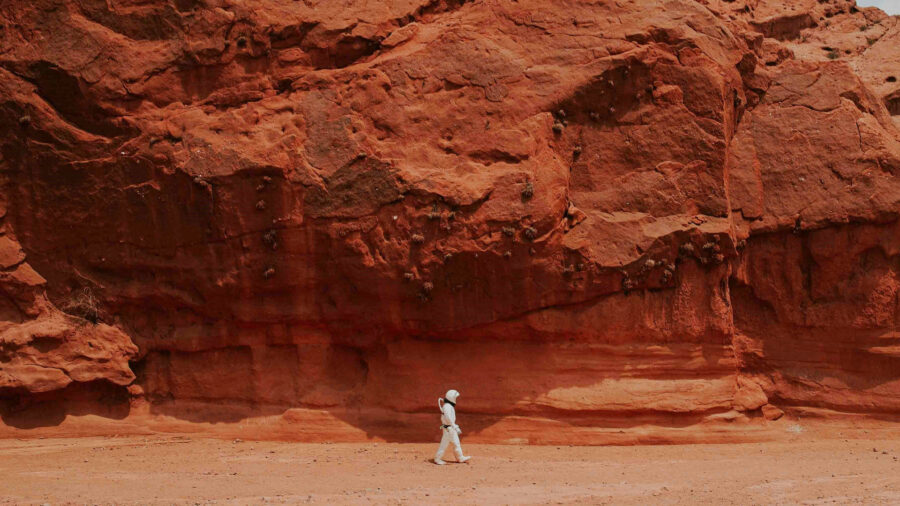Ancient Mars Smiley Face Reveals Signs Of Life?

It’s long been suggested that there was, or is, life on Mars. Thanks to new infrared images from the satellite orbiting the planet, they’ve found evidence of life, perhaps in the form of a big, smiling face. The Mars Smiley Face points to places where the last of the water on Mars would have been, and where the last remaining signs of life would likely be concentrated if there is any to find.
The Mars Smiley Face

If there was life on Mars at some point, it’s likely that it congregated near water, like you’d find on Earth. So the Mars Smiley Face having once been a lake makes for a good place for scientists to look for evidence of life.
The Mars Smiley Face wasn’t all that the team identified either. Based on images from the European Space Agency’s ExoMars Trace Gas Orbiter, there are nearly 1,000 different deposits across the planet, suggesting quite a few bodies of water. The team that discovered the dried-up lakes says these deposits are exciting because they suggest optimal conditions for the growth of life.
Salt Deposits Not Visible To The Naked Eye

The Mars Smiley Face appears purplish, which is said to be due to salt deposits. However, it’s important to note that while the circle appears purple in the images shown to the public, it doesn’t appear that way to the naked eye. In fact, features like this are almost impossible to see with the naked eye, but when scanned with infrared cameras, the salt stands out in contrast to the rest of the minerals covering the planet, adopting a purple appearance.
Despite the unique appearance of the Mars Smiley Face, scientists aren’t suggesting the design was made by a sentient being for people to find. Instead, it’s because of the crater and the salt left behind. Previous research shows that salt deposits came from ancient lakes.
Was Once Like Earth

While having the Mars Smiley Face to show scientists where some of the planet’s water had been, the fact that Mars had a lot of water isn’t anything new. Scientists already had evidence suggesting that up until about 2 billion years ago, mars was covered with oceans, lakes, and rivers just like Earth. However, something caused the planet to lose its water and become the Mars people know today.
A Safe Haven For Small Organisms

As the water vanished from the planet, concentrations of highly saline water would have remained, able to handle staying above freezing. Spots like the Mars Smiley Face likely would have become a safe haven for any surviving microbes, and, as the salt dried up, could have preserved evidence of these life forms.
Still Looking For Signs Of Life

Of course, that only matters if there were actually life forms on the planet. As of now, there has not yet been any evidence of life, even in the form of microbes, on the surface of Mars. However, scientists are hoping that the reveal of the Mars Smiley Face will give them a place to concentrate their research and perhaps find something they’ve been missing.
However, even if the Mars Smiley Face doesn’t reveal any sign of life on Mars, it’s still an amazing discovery that allows scientists to understand more about the planet and what it might have looked like before.












